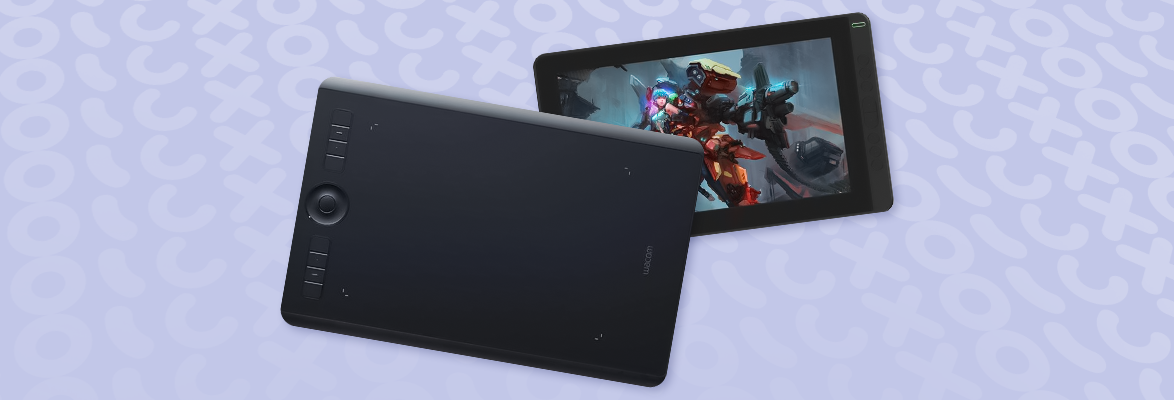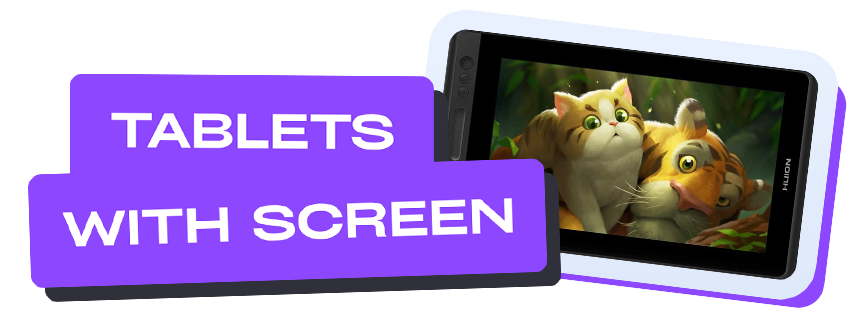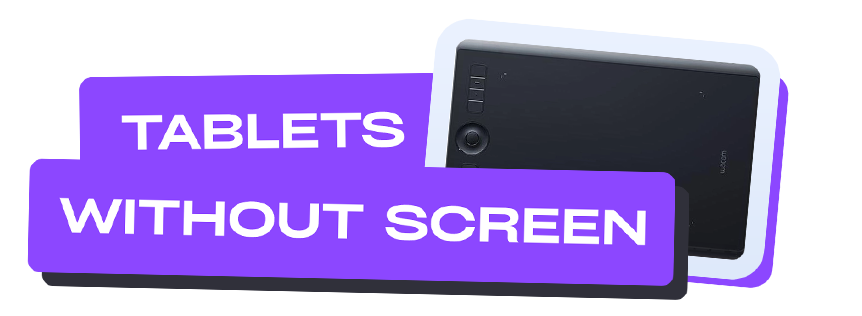
Choosing a Graphics Tablet
2024.04.11
Good lighting, a table adjusted to the proper height, an ergonomic chair, a few personal touches for comfort, and—an essential part of any artist's workspace—a graphics tablet.
It's impossible to imagine a modern artist without technology—in our time, the stylus has come to replace the brush, and instead of a canvas, works appear on a screen. Today, we want to look at an important question: How to choose a graphics tablet for unleashing your creativity and for work. When choosing a graphics tablet for drawing, one of the main decisions is whether your device will have a screen. Both options have their own unique advantages and disadvantages that you need to consider when making your decision. We'll give tips about the features you should look out for and how to choose exactly what you need!

Pros:
Direct Feedback: When working on a tablet with a screen, you draw directly on its surface, which gives a more familiar feel reminiscent of working with paper and pencil.
Accuracy: The possibility to see where and how you place your strokes for greater precision and control.
Potential for Creativity: Thanks to the direct connection between your drawing and the movement of your hand, tablets with screens can encourage freedom and more expression.
Cons:
Cost: Tablets with a screen are usually more expensive than those without screens, and to avoid color and resolution issues, you'll need a device with a good screen and QHD resolution.
Weight and Dimensions: The screen adds weight and bulk to the device, making it less portable.
Reflections and Glare: Some models have problems with glare, which can be prohibitive when working in bright light.

Pros:
Cost: They are usually more affordable, making them an appealing choice for beginner artists or those not ready to purchase an expensive device.
Portability: Without a screen, tablets are usually lighter and more compact, making them an ideal choice for anyone who frequently works outside the home or office.
No Glare: Without a screen, there are no problems with reflections or glare, which makes working in certain light conditions more comfortable.
Cons:
No Direct Feedback: When working on a tablet without a screen, you have to look at the monitor, which can be challenging and uncomfortable, especially if you aren't used to this way of working.
Learning Curve: It'll take more time to learn how to use the tablet since, in addition to the software, you'll need to learn how to work without direct feedback.
Need for a Quality Monitor: Without a high-quality monitor, there may be problems with color rendering and the brightness of the final work
Needs
When choosing a graphics tablet, consider your own needs and preferences. Are you ready to pay for a direct visual connection to your drawings, or is portability more important? When making your choice, consider what qualities are key for you.
Compatibility and Functionality
Regardless of your choice, it's important to make sure your tablet is compatible with your computer and software. It's also worth taking note of functional features such as pen pressure, sensitivity levels, and the presence of additional buttons.
Conclusion
Any device takes some getting used to, especially when it comes to your first tablet. There is no universal formula, and the right decision comes down to your own unique needs and situation. Regardless of the tablet type, it is important to remember that developing skills takes time and practice. Choose a tablet that inspires your creativity and makes drawing enjoyable and fun, and if possible, try out different options. Even the best artists use both screen displays and regular graphics tablets—after all, a device is simply a conductor of your skills and ideas.
